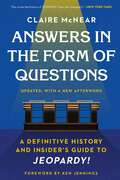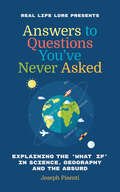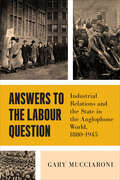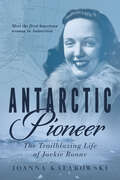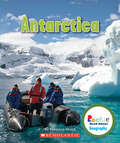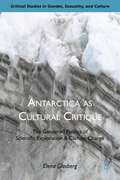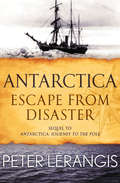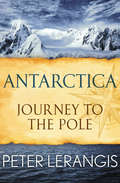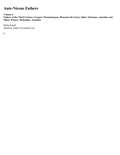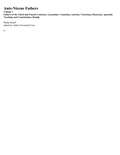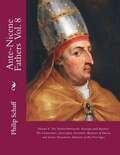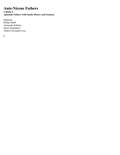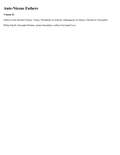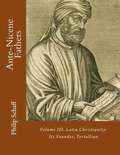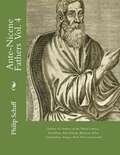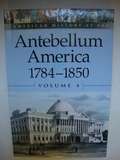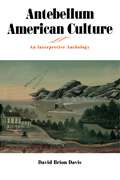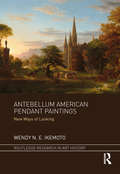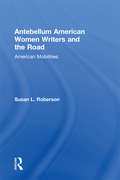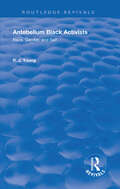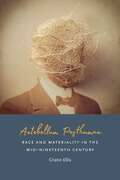- Table View
- List View
Answers in the Form of Questions: A Definitive History and Insider's Guide to Jeopardy!
by Claire McNearWhat is the smartest, most celebrated game show of all time? In this insider's guide, discover the rich history of Jeopardy! -- the beloved game show that has shaped our culture and entertained audiences for years.Jeopardy! is a lot of things: record-setting game show, beloved family tradition, and proving ground for many of North America's best and brightest. Nearly four decades into its current edition, Jeopardy! now finds itself facing unprecedented change.This is the chronicle of how the show became a cross-generational touchstone and where it's going next. ANSWERS IN THE FORM OF QUESTIONS dives deep behind the scenes, with longtime host Alex Trebek talking about his life and legacy and the show's producers and writers explaining how they put together the nightly game. Readers will travel to bar trivia showdowns with the show's biggest winners and training sessions with trivia whizzes prepping for their shot onstage. And they'll discover new tales of the show's most notable moments-like the time the Clue Crew almost slid off a glacier-and learn how celebrity cameos and Saturday Night Live spoofs built a television mainstay. ANSWERS IN THE FORM OF QUESTIONS looks to the past -- and the future -- to explain what Jeopardy! really is: a tradition unlike any other.
Answers to Questions You've Never Asked: Explaining the 'What If' in Science, Geography and the Absurd
by Joseph PisentiThe #1 bestselling trivia collection with bizarre facts to entertain you for hours, from the creator of YouTube&’s RealLifeLore. Where can I move to so that I&’m never tempted by McDonald&’s again? How far into the Pacific does Trump&’s wall stretch? If Plato came back to life, what would he think of modern democracy? Why do all empires fail? Who decides what countries are allowed to participate in the Olympics? What makes Finland so great? When you take the most absurd parts of history, science, economics, and geography, you end up with a pretty confusing picture of humanity. Why do we have borders, what&’s the furthest you can get from the ocean, how do you qualify as a country, and why did Vikings wear those silly helmets? These are just a few of the strange questions that bounce around the head of YouTube sensation Joseph Pisenti, aka RealLifeLore. In his debut book, Pisenti explores the nonsensical humor of the universe with in-depth analysis of empires, economies, and ecosystems as he helps answer the ridiculous. Why, you ask? Because someone has to. Using line drawings, graphs, and charts, Pisenti not only details the absurd—he also provides explanations on why things are . . . and why they aren&’t.
Answers to the Labour Question: Industrial Relations and the State in the Anglophone World, 1880–1945 (Political Development: Comparative Perspectives)
by Gary MucciaroniSince the mid-nineteenth century, public officials, reformers, journalists, and other elites have referred to “the labour question.” The labour question was rooted in the system of wage labour that spread throughout much of Europe and its colonies and produced contending classes as industrialization unfolded. Answers to the Labour Question explores how the liberal state responded to workers’ demands that employers recognize trade unions as their legitimate representatives in their struggle for compensation and control over the workplace. Gary Mucciaroni examines five Anglophone nations – Australia, Canada, Great Britain, New Zealand, and the United States – whose differences are often overlooked in the literature on political economy, which lumps them together as liberal, “market-led” economies. Despite their many shared characteristics and common historical origins, these nations’ responses to the labour question diverged dramatically. Mucciaroni identifies the factors that explain why these nations developed such different industrial relations regimes and how the paths each nation took to the adoption of its regime reflected a different logic of institutional change. Drawing on newspaper accounts, parliamentary debates, and personal memoirs, among other sources, Answers to the Labour Question aims to understand the variety of state responses to industrial unrest and institutional change beyond the domain of industrial relations.
Antaral: End-Century Meditations
by K. SatchidanandanThe author looks back at the passing century / millennium and also ponders over the coming one. The explorations cut across diverse disciplines like history, philosophy, literature, science, religion and social and political thought.
Antarctic Pioneer: The Trailblazing Life of Jackie Ronne
by Joanna KafarowskiJackie Ronne reclaims her rightful place in polar history as the first American woman in Antarctica. Jackie was an ordinary American woman whose life changed after a blind date with rugged Antarctic explorer Finn Ronne. After marrying, they began planning the 1946–1948 Ronne Antarctic Research Expedition. Her participation was not welcomed by the expedition team of red-blooded males eager to prove themselves in the frozen, hostile environment of Antarctica.On March 12, 1947, Jackie Ronne became the first American woman in Antarctica and, months later, one of the first women to overwinter there.The Ronne Antarctic Research Expedition secured its place in Antarctic history, but its scientific contributions have been overshadowed by conflicts and the dangerous accidents that occurred. Jackie dedicated her life to Antarctica: she promoted the achievements of the expedition and was a pioneer in polar tourism and an early supporter of the Antarctic Treaty. In doing so, she helped shape the narrative of twentieth-century Antarctic exploration.
Antarctica
by David W. H. WaltonThis thought-provoking and ambitious volume surveys the causes and extent of environmental contamination in Antarctica, and looks critically at future prospects. It highlights the key role that modern techniques of analytical chemistry play in achieving reliable empirical data in this field and their impact on shaping legal provisions. Written by prominent scientists and experts in Antarctic sciences, this work gives an overview of the studies undertaken by countries to assess the impact of pollution phenomena on the uniquely clean environment of Antarctica. Empirical studies and regulatory issues are evaluated in context with the goal of providing a model approach to more polluted areas of the world.
Antarctica
by MugilThe book, a valuable guide especially for students, describes the history and geography of Antarctica, the coldest, driest, windiest and the Earth's southernmost continent, underlying the South Pole.
Antarctica (Rookie Read-About Geography: Continents)
by Rebecca HirschA harsh and icy land isolated at the far southern reaches of the globe, Antarctica is the most recently discovered of the continents. Rookie Read-About: Continents series gives the youngest reader (Ages 3-6) an introduction to the components that make each continent distinctive and exceptional. Readers will get to know each continents' geography, history, and wildlife.
Antarctica as Cultural Critique
by Elena GlasbergArguing that Antarctica is the most mediated place on earth and thus an ideal location for testing the limits of bio-political management of population and place, this book remaps national and postcolonial methods and offers a new look on a 'forgotten' continent now the focus of ecological concern.
Antarctica: Escape from Disaster (Antarctica Ser. #Vol. 2)
by Peter LerangisTrapped in Antarctic ice, Jack Winslow and his sons fight to get homeIt has been nearly a year since Jack Winslow and his two sons, Colin and Andrew, set out to conquer Antarctica. While Colin and most of the crew stayed behind on the ship, Andrew made a dash for the South Pole, nearly dying in the process. When he returns to the Mystery, frostbitten and frail, the ship has become wedged between two ice floes. As the crew hacks at the ice with pick-axes, trying desperately to free the ship, the ice shifts, shattering the hull and giving the Winslows and their team just enough time to gather provisions before the Mystery plummets into the frigid water. Hundreds of miles of ice and sea stand between the Winslows and safety. As food becomes scarce, the crew begins grumbling of mutiny. Colin and Andrew are tired, hungry, and freezing cold—but their struggle for survival has only just begun. This ebook features an illustrated biography of Peter Lerangis including rare photos and never-before-seen documents from the author&’s personal collection.
Antarctica: Journey to the Pole
by Peter LerangisA father and his sons embark on a perilous trek to the ends of the earthIt is May 1909, and the race to the South Pole is on. For years, Jack Winslow has dreamed of conquering the frozen wasteland, but just before he sets sail, his wife dies suddenly. Rather than cancel the voyage, he brings his two grief-stricken sons, Colin and Andrew, on the adventure of a lifetime. Although the teenagers have read widely of the Antarctic and the icy, unforgiving sea that surrounds it, no book could prepare them for the journey ahead. Killer whales, temperatures as low as –100°F, and deadly crushing ice floes are only the beginning of their troubles. To survive this trip, the Winslows will have to set aside their grief and come together as a family. This ebook features an illustrated biography of Peter Lerangis including rare photos and never-before-seen documents from the author&’s personal collection.
Ante-nicene Fathers: Volume 6. Fathers Of The Third Century: Gregory Thaumaturgus, Dionysius The Great, Julius Africanus, Anatolius And Minor Writers, Methodius, Arnobius (Ante-nicene Fathers Ser.)
by Philip Schaff Arthur CoxeIn this volume a mass of fragmentary material [1] has been reduced to method, and so harmonized as to present an integral result. The student has before him, therefore, (1) a view of the Christian Church emerging from the ten persecutions; (2) a survey of its condition on the eve of that great event, the (nominal) conversion of the empire; (3) an introduction to the era of Athanasius; and (4) a history of events that led to the calling of the first Catholic council at Nicæa.
Ante-nicene Fathers: Volume 7. Fathers Of The Third And Fourth Centuries: Lactantius, Venantius, Asterius, Victorinus, Dionysius, Apostolic Teaching And Constitutions, Homily (Ante-nicene Fathers Ser.)
by Philip Schaff Arthur CoxeThe genius of Lactantius suffers a sad transformation when unclothed of vernacular and stripped of the idiomatic graces of his style. But the intelligent reader will be sure to compare this translation with the Latinity of the original, and to recur to it often for the enjoyment of its charming rhetoric, and of the high sentiment it so nobly enforces and adorns. This volume will be the favourite of the series with many. The writings of the Christian Tully alone make up more than half of its contents; and it is supremely refreshing to reach, at last, an author who chronicles the triumph of the Gospel [1] over "Herod and Pontius Pilate;" over the heathen in their "rage," and the people in their "vain imaginings;" over "the kings of the earth who stood up, and the rulers who were gathered together against the Lord and against His Christ."
Ante-nicene Fathers: Volume 8. The Twelve Patriarchs, Excerpts And Epistles, The Clementina, Apocrypha, Decretals, Memoirs Of Edessa And Syriac Documents, Remains Of The First Ages (Ante-nicene Fathers Ser. #8)
by Philip Schaff Arthur CoxeVolume 8: The Testaments of the Twelve Patriarchs Excerpts of Theodotus Two Epistles Concerning Virginity Pseudo-Clementine Literature Apocrypha of the New Testament The Decretals Memoirs of Edessa And Other Ancient Syriac Documents Remains of the Second and Third Centuries
Ante-nicene Fathers: Volume I. Apostolic Fathers With Justin Martyr And Irenaeus (Ante-nicene Fathers Ser.)
by Philip Schaff Arthur Coxe Alexander Roberts James DonaldsonThis volume, containing the equivalent of three volumes of the Edinburgh series of the Ante-Nicene Fathers, will be found a library somewhat complete in itself. The Apostolic Fathers and those associated with them in the third generation, are here placed together in a handbook, which, with the inestimable Scriptures, supplies a succinct autobiography of the Spouse of Christ for the first two centuries. No Christian scholar has ever before possessed, in faithful versions of such compact form, a supplement so essential to the right understanding of the New Testament itself. It is a volume indispensable to all scholars, and to every library, private or public, in this country.
Ante-nicene Fathers: Volume II. Fathers Of The Second Century: Tatian, Theophilus Of Antioch, Athenagoras Of Athens, Clement Of Alexandria (Ante-nicene Fathers Ser.)
by Philip Schaff Arthur Coxe Alexander Roberts James DonaldsonThe series was originally published between 1867 and 1873 by the Presbyterian publishing house T. & T. Clark in Edinburgh under the title Ante-Nicene Christian Library (ANCL), as a response to the Oxford movement's Library of the Fathers which was perceived as too Roman Catholic. The volumes were edited by Rev. Alexander Roberts and James Donaldson. This series was available by subscription, but the editors were unable to interest enough subscribers to commission a translation of the homilies of Origen.
Ante-nicene Fathers: Volume III. Latin Christianity: Its Founder, Tertullian (Ante-nicene Fathers Ser. #3)
by Philip Schaff Arthur Coxe Alexander Roberts James DonaldsonVolume III. Latin Christianity: Its Founder, Tertullian
Ante-nicene Fathers: Volume IV: Fathers Of The Third Century: Tertullian, Part Fourth, Minucius Felix, Commodian, Origen, Parts First And Second (Ante-nicene Fathers Ser. #4)
by Philip Schaff Arthur CoxeVolume IV. Fathers of the Third Century: Tertullian, Part Fourth, Minucius Felix, Commodian, Origen, Parts First and Second
Antebellum America: 1784-1850 (American History By Era Series #Volume 4)
by William DudleyThe time between America's independence in 1783 and the year 1850 was an era of remarkable growth in territory and power for the new nation, as well as a time of social ferment and change. <P><P>Americans created a constitutional government, expanded westward, and grappled with the problem of slavery.
Antebellum American Culture: An Interpretive Anthology
by David Brion DavisFirst published in 1979, this volume offers students and teachers a unique view of American history prior to the Civil War. Distinguished historian David Brion Davis has chosen a diverse array of primary sources that show the actual concerns, hopes, fears, and understandings of ordinary antebellum Americans. He places these sources within a clear interpretive narrative that brings the documents to life and highlights themes that social and cultural historians have brought to our attention in recent years. Beginning with the family and the issue of socialization and influence, the units move on to struggles over access to wealth and power; the plight of "outsiders" in an "open" society; and ideals of progress, perfection, and mission. The reader of this volume hears a great diversity of voices but also grasps the unities that survived even the Civil War.
Antebellum American Culture: An Interpretive Anthology
by David Brion DavisFirst published in 1979, this volume offers students and teachers a unique view of American history prior to the Civil War. Distinguished historian David Brion Davis has chosen a diverse array of primary sources that show the actual concerns, hopes, fears, and understandings of ordinary antebellum Americans. He places these sources within a clear interpretive narrative that brings the documents to life and highlights themes that social and cultural historians have brought to our attention in recent years. Beginning with the family and the issue of socialization and influence, the units move on to struggles over access to wealth and power; the plight of "outsiders" in an "open" society; and ideals of progress, perfection, and mission. The reader of this volume hears a great diversity of voices but also grasps the unities that survived even the Civil War.
Antebellum American Pendant Paintings: New Ways of Looking (Routledge Research in Art History)
by Wendy N. IkemotoAntebellum American Pendant Paintings: New Ways of Looking marks the first sustained study of pendant paintings: discrete images designed as a pair. It opens with a broad overview that anchors the form in the medieval diptych, religious history, and aesthetic theory and explores its cultural and historical resonance in the 19th-century United States. Three case studies examine how antebellum American artists used the pendant format in ways revelatory of their historical moment and the aesthetic and cultural developments in which they partook. The case studies on John Quidor’s Rip Van Winkle and His Companions at the Inn Door of Nicholas Vedder (1839) and The Return of Rip Van Winkle (1849) and Thomas Cole’s Departure and Return (1837) shed new light on canonical antebellum American artists and their practices. The chapter on Titian Ramsay Peale’s Kilauea by Day and Kilauea by Night (1842) presents new material that pushes the geographical boundaries of American art studies toward the Pacific Rim. The book contributes to American art history the study of a characteristic but as yet overlooked format and models for the discipline a new and productive framework of analysis focused on the fundamental yet complex way images work back and forth with one another.
Antebellum American Women Writers and the Road: American Mobilities (Routledge Studies In Nineteenth Century Literature Ser. #5)
by Susan L. RobersonA study of American women’s narratives of mobility and travel, this book examines how geographic movement opened up other movements or mobilities for antebellum women at a time of great national expansion. Concerned with issues of personal and national identity, the study demonstrates how women not only went out on the open road, but participated in public discussions of nationhood in the texts they wrote. Roberson examines a variety of narratives and subjects, including not only traditional travel narratives of voyages to the West or to foreign locales, but also the ways travel and movement figured in autobiography, spiritual, and political narratives, and domestic novels by women as they constructed their own politics of mobility. These narratives by such women as Margaret Fuller, Susan Warner, and Harriet Beecher Stowe destabilize the male-dominated stories of American travel and nation-building as women claimed the public road as a domain in which they belonged, bringing with them their own ideas about mobility, self, and nation. The many women’s stories of mobility also destabilize a singular view of women’s history and broaden our outlook on geographic movement and its repercussions for other movements. Looking at texts not usually labeled travel writing, like the domestic novel, brings to light social relations enacted on the road and the relation between story, location, and mobility.
Antebellum Black Activists: Race, Gender, and Self
by R. J. YoungFirst published in 1996. In this volume the author has collected several published works to explore the ideas of manhood in America, Sojourner Truth, ties of ordinary blacks to those still in slavery and a study of the Northern African American community; new information on black activities in Canada and begins with an essay on the five elements of black community activity before the Civil War: churches, newspapers, conventions, organizations, and emigration which looks at of these "platforms for change" going through developmental stages from experimentation, adjustment and reaching maturity in the 1850’s.
Antebellum Posthuman: Race and Materiality in the Mid-Nineteenth Century
by Cristin EllisFrom the eighteenth-century abolitionist motto “Am I Not a Man and a Brother?” to the Civil Rights-era declaration “I AM a Man,” antiracism has engaged in a struggle for the recognition of black humanity. It has done so, however, even as the very definition of the human has been called into question by the biological sciences. While this conflict between liberal humanism and biological materialism animates debates in posthumanism and critical race studies today, Antebellum Posthuman argues that it first emerged as a key question in the antebellum era. In a moment in which the authority of science was increasingly invoked to defend slavery and other racist policies, abolitionist arguments underwent a profound shift, producing a new, materialist strain of antislavery. Engaging the works of Douglass, Thoreau, and Whitman, and Dickinson, Cristin Ellis identifies and traces the emergence of an antislavery materialism in mid-nineteenth century American literature, placing race at the center of the history of posthumanist thought. Turning to contemporary debates now unfolding between posthumanist and critical race theorists, Ellis demonstrates how this antebellum posthumanism highlights the difficulty of reconciling materialist ontologies of the human with the project of social justice.
